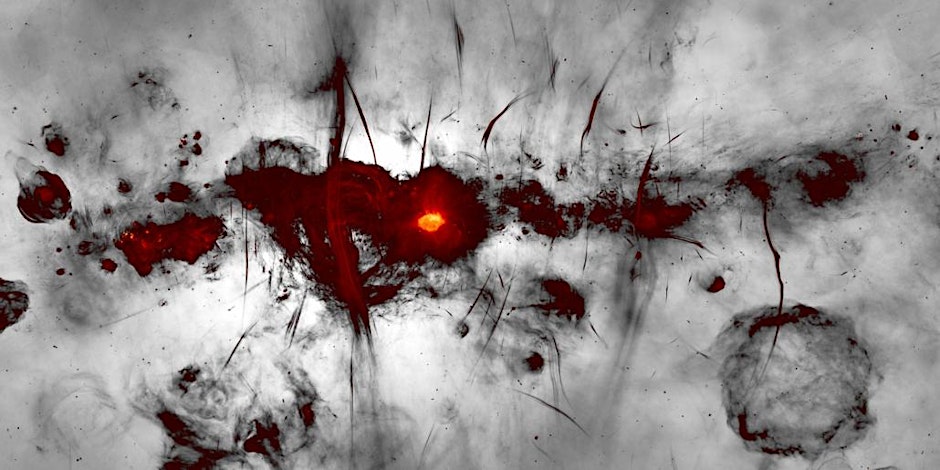Tuning into the Invisible Universe

Past eventMon., April 15, 2024, 7–8:30 p.m.
Free with reservation
Education and Visitor Center, Rothenberg Hall
Radio astronomy began by accident. Since the 1930s, when American physicist Karl Jansky stumbled upon a radio hiss coming from the center of the Milky Way, radio light has revealed a universe full of surprises: black holes billions of light-years away, rapidly spinning neutron stars, and remnant light from the primordial universe—to name a few. Allison Matthews will recount the origins and history of radio astronomy, its current puzzles, and future promises.
Program:
6:30 p.m. Doors open
7 p.m. Brief musical performance
7:30 p.m. Lecture begins
About the Speaker:
Allison Matthews is a postdoctoral fellow at the Carnegie Science Observatories. She combines radio observations of galaxies with optical and infrared imaging and spectroscopy to understand when—and over what time—most of the stars in our universe formed.

The new MeerKAT image of the Galactic center region is shown with the Galactic plane running horizontally across the image. Many new and previously known radio features are evident, including supernova remnants, compact star-forming regions, and the large population of mysterious radio filaments. The broad feature running vertically through the image is the inner part of the radio bubbles, spanning 1,400 light-years across the center of the Galaxy. Colors indicate bright radio emission, while fainter emission is shown in grayscale. | I. Heywood, SARAO.
Carnegie Observatories presents the 22nd season of talks highlighting the most exciting discoveries in today’s golden age of astronomy. Carnegie Observatories scientists have transformed humankind’s understanding of the Cosmos, from the revelation of the Universe’s expansion to the discovery of dark energy—and the groundbreaking work continues today. Carnegie scientists are still at the vanguard of astronomical research at the world-famous Las Campanas Observatory in Chile, home of the twin 6.5m Magellan telescopes and future site of the 24m Giant Magellan Telescope.